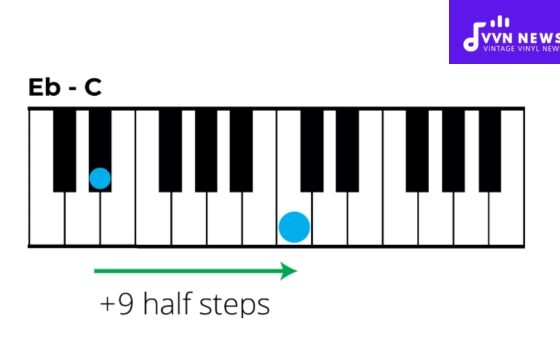Music is a universal language with deep and complex roots. In its study, we often come across terms that may seem perplexing to those just starting or enhancing their learning journey.
Among this distinguished lexicon, you might ask, what is an irregular time signature? For many, it’s an unusual yet fascinating element of music theory waiting to be discovered.
As the heartbeat of music, time signatures structure a piece into balanced measures or bars where notes and rests reside.
While some are straightforward like the familiar 4/4 signifying four quarter notes per measure, others might stump you with their uniqueness.
Enter irregular time signatures- the rhythmic enigma that can mystify even seasoned musicians. They’re like the spice in your favorite dish – often subtle but transformative!
What Defines an Irregular Time Signature?
An irregular time signature, often referred to as an asymmetrical time signature, is a time signature that doesn’t fit into the traditional, even pattern of 2/4, 3/4, or 4/4.
Instead, these signatures create uncommon rhythmic patterns, with an uneven number of beats per measure.
This unique rhythmic structure makes pieces written in irregular time signatures resonate differently, offering an unexpected and captivating musical experience for the listener.
An irregular time signature is constructed using two numbers: the upper number denotes how many beats are in a measure, while the lower number indicates which note receives the beat.
Each measure will therefore contain a different total length than what comes traditionally in duple (2/2 or 2/4) or triple meter (3/4).
Also Read: F Sharp Minor Pentatonic Scale [How To Use In Your Compositions]
How Can You Identify an Irregular Time Signature?
Identifying irregular time signatures can be as simple as count-checking beats per measure, but it also involves recognizing unconventional patterns in the rhythm.

- Step 1: First and foremost, you’ll notice that irregular time signatures also consist of two numbers, much like their regular counterparts. The top number indicates how many beats are in a measure, while the bottom number specifies what note gets the beat.
- Step 2: What sets them apart is that, unlike regular time signatures where the top number is often divisible by two or three, in irregular time signatures it isn’t. Hence, they do not fit neatly into binary or ternary groupings.
Examples like 5/8, 7/4, or 11/16 may seem puzzling at first. But with a bit of practice and patience, you’ll start to see how these unusual patterns create rich textures and unexpected shifts in melodies that set them apart from their typical counterparts.
What Are Common Examples of Irregular Time Signatures?
Diving deeper into the astounding world of irregular time signatures, one must be aware of some common variations.
These rhythmic anomalies often adorn compositions that invoke a certain degree of intrigue or intricacy.
Knowing these instances can greatly enhance your comprehension and proficiency in music.
5/4 Time Signature
Meet the 5/4 time signature, a staple in contemporary as well as classical music. In layman’s terms, 5/4 means there are five beats per measure, with each beat being a quarter note in duration.
A distinguished example is the theme from the iconic series ‘Mission: Impossible’ where every bar is filled with a captivating mix of five beats.
7/8 Time Signature
Then we have the unusual yet compelling 7/8 time signature, common to Balkan and Middle Eastern tunes. This exotic rhythm-bearer showcases seven eighth-note beats per measure.
To tap into its essence, consider listening to ‘Money’ by Pink Floyd – it sways seamlessly along these unevenly timed grooves.
Variations on Compound Signatures
In fringes lie assorted compound signatures like 10/8 or 11/8 that are seen lurking around sophisticated ensembles and symphonies. One thing that stands out is the curious grouping of beats within irregular time signatures.
For instance, 7/8 might be constructed as a quick-quick-slow rhythm drill (2+2+3) while others might retain an entirely separate beat classification.
Irregular time signatures pave your way toward becoming a multifaceted musician. They’re not just anomalies but rather gateways to unlock new dimensions of melody and percussiveness!
Also Read: E Minor Pentatonic Scale [How To Use In Your Music Composition]
Why Is It Challenging to Dance to Irregular Time Signatures?
The complexity that makes irregular time signatures worth exploring is exactly what makes them challenging to dance to.

If you’ve tried moving your body rhythmically to a piece in 4/4, you might be able to follow along effortlessly as there’s an intuitive four-beat rhythm that guides your movement.
But when steps must align with the fluctuating pace of alternating counts, such as in 7/8 or 5/4 – that’s when the real challenge kicks in.
Unpredictable Beats
One of the main obstacles lies in the unpredictable beats – a hallmark of irregular time signatures.
They disrupt traditional rhythmic patterns, throwing both experienced dancers and newcomers off balance.
Tunes you can sway or bob easily too usually stick to even counts (2/4, 4/4), but with unusual groupings like three then two (as in 5/8), things become less predictable, more jumbled.
Grooving becomes an exercise in counting and concentration rather than fluid artistic expression.
Maintaining the Tempo
Maintaining tempo is another challenge presented by irregular time signatures.
Dancers must keep up with rapid shifts from quick-paced bars, slow down for lingering beats, and switch tempo again all within one piece!
Musical Arrangement
The irregular musical arrangement often lends itself to oddly structured choreography, creating another layer of complexity for dancers.
The absence of a continual pulse can leave dancers feeling directionless or tempo-bound since irregular time signatures often lack a clear downbeat.
Dancing to music with an irregular time signature may be difficult – yes – it is essentially a rhythmic puzzle waiting to be solved by adventurous souls ready for an exhilarating challenge!
How Does Ear Training Help in Understanding Irregular Time Signatures?
Ear training is much more than a mere exercise for musicians. It entails developing the innate ability to recognize and distinguish between different pitches, intervals, melodies, chords, and rhythms solely by hearing them.
This skill is particularly beneficial when encountering irregular time signatures. Let’s explore how.
Fosters an awareness of rhythm
At the core of ear training lies a keen sense of rhythm. When listening to a piece of music with this heightened awareness, one can analyze rhythm patterns better.
This way, complex rhythmic structures like irregular time signatures start to unveil themselves through sounds and patterns revealing their unique sense of beat.
Assists in recognizing groupings
In irregular time signatures, it’s important to identify “groupings,” or clusters of beats.
Ear training helps you perceive these rhythmic segments which are often present but cryptic for inexperienced ears.
Encourages adaptable counting
Practicing ear training fosters flexible counting skills while listening to music that isn’t neatly packaged in an even time signature like 4/4 or 2/4.
This flexibility is particularly needed when confronted with unconventional patterns like those found in irregular time signatures.
Shapes transcription abilities
Transcribing music not only involves writing down melodic notes but accurately noting the rhythmic values as well.
A trained ear can discern variations in emphasis on certain beats identifying irregular time signatures existing within the composition.
Enhances rhythmic precision
Ear training empowers individuals with a deeper grasp on rhythm providing precision while playing complex pieces entailing irregular time signatures.
Ear training presents an intriguing pathway facilitating comprehension and execution of irregular rhythms within diverse musical contexts.
Just like observing skilled dancers enables us to recognize subtle footwork; similarly, acute hearing unveils hidden layers within the music.
The pulsing heartbeats of irregular time signatures, once elusive, emerge clearer and their strange beauty comes to light.
Also Read: A Guide Transposing Into The Alto C [Navigate Music Transposition]
Why Are Groupings Important in Irregular Time Signatures?
The significance of groupings in irregular time signatures cannot be overstated.

They are the magnifying glass through which you decode the rhythm enigma of these time signatures. Essentially, groupings split measures into smaller, easily digestible fragments.
These groups form a pattern, providing a roadmap for musicians to follow and helping audiences anticipate what’s coming next. This becomes especially valuable when dealing with irregular time signatures.
For instance, let’s examine 5/4 – an uncommon yet not unheard-of time signature. Typically, this is split up into groupings of 3 and 2 or 2 and 3 (beats per measure).
Imagine the famous tune Take Five by Dave Brubeck – its rhythm follows a strict pattern of three beats followed by two.
To put it simply, without groupings, complex music pieces with irregular signatures would seem more challenging to perform and grasp – like traversing a convoluted maze without a map.
They gift organization to this playing field of odd beats, making musical interpretation more accessible to you as a musician or listener.
Also Read: E Major Triad [Master This Staple Of Music Composition]
FAQs
What defines an irregular time signature in music?
An irregular time signature refers to a rhythmic pattern that cannot be evenly divided into two, three, or four beats per measure.
Are 5/4 and 7/8 examples of irregular time signatures?
Yes, both 5/4 and 7/8 are common examples of irregular time signatures due to their asymmetric beat divisions.
How can I count an irregular time signature like 7/8?
Typically, you count 7/8 by breaking it down into smaller groups such as 2+2+3; thus, you would count it as “1-2, 1-2, 1-2-3”.
Why do composers use irregular time signatures?
Composers use them to add complexity, variety, and sometimes an element of surprise or freshness to the rhythm of a piece.
Can any genre of music have irregular time signatures?
Absolutely. While often found in progressive rock and jazz, irregular time signatures can be used in nearly any musical genre.
Also Read: A Sharp Minor Pentatonic Scale [Unique Harmonic Possibilities]
Conclusion
Irregular time signatures add a compelling layer to the music that breaks the bounds of predictability. By venturing beyond standard time, they enrich the rhythmic landscape.
You’ve learned that these signatures do not follow the typical pattern of beats per measure, making them challenging yet rewarding. Embrace their complexity and let your musical ventures flourish. Irregular meters are a skill honed through practice and exposure.








